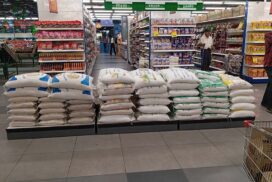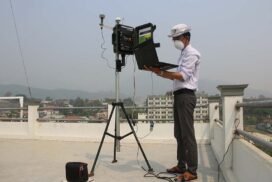Myanmar Rice and Paddy Traders Association will roll out rice sales at affordable prices in Yangon Region starting 16 February, covering 18 townships.
Under the guidance of the Myanmar Rice Federation, the association will sell Aemahta rice at K3,300 per pyi (2.13 kg or 4.69 lb) on Fridays, Saturdays and Sundays through 58 member retailers in 18 townships in the region, the notification stated.
This rice subsidy scheme will include 18 townships: Hlaingthaya, Shwepyitha, Dagon Myothit (South), North Okkalapa, Dagon Myothit (North), Dagon Seikkan, Dagon Myothit (East), Hmawbi, Thingangyun, Thakayta, Pazundaung, Dawbon, Dala, Kyimyindine, Ahlon, Seikkyi Khanaungto, Mingaladon and Insein.
At present, rice prices are surging. The non-premium rice moved between K72,000 and K84,000 per sack depending on varieties (Aemahta, rice grown under the intercropping system). Premium Pawsan wholesale prices are K100,000-K135,000 per sack depending on producing areas (Myaungmya, Pyapon and Shwebo) on 14 February, as per the association.
Next, the reasonable market prices set for January are K70,000-K72,000 per 108-pound sack of Aemahta rice (25 per cent broken), K72,000-K75,000 for Aemahta rice (15 per cent broken), K75,000-K78,000 for Aemahta (10-5 per cent broken), K80,000-K85,000 for 90-day short matured rice, Pakan, Anyatha, special Aemahta rice varieties (5-10 per cent broken), K95,000-K100,000 for Ayamin, Ayeya Padaytha, Ayamin (5-10 percent broken), K100,000-K110,000 for Ayeyawady Pawsan rice and K90,000-K100,0000 for normal Shwebo Pawsan, K110,000-K115,000 for Ayeyawady Kyapyan (5-10 percent broken) and K125,000-K135,000 for premium Shwebo Pawsan (5-10 per cent broken).
The federation determined reasonable market prices by considering the following factors: fair profit for the farmers, millers and distributors, reasonable prices for consumers, last year’s market price, global market prices and other commodities prices. Yet, the market price is way higher than the reasonable prices. Therefore, the federation rigorously reflected on high market rates.
Consequently, MRF encouraged the affiliated associations, members of commodity depots, exporters and rice companies to follow the price.
Nonetheless, according to the MRF, the price difference is five to ten per cent between the retail and wholesale markets and 10-20 per cent for modern trade with consumer packaging at mini-marts. MRF stated that those reasonable market prices only influence the new monsoon paddy produced this year.
MRF urged the buyers to contact the MRF and the relevant wholesale centres to have a smooth trade.
The federation notified on 21 September paddy reference price for 2023 monsoon paddy and called for its affiliated companies, millers and traders to buy it at a reasonable market price during the monsoon paddy harvest season. — NN/EM
Myanmar rice body to introduce subsidy programme across Yangon Region on 16 Feb
- February 15, 2024
- 177














